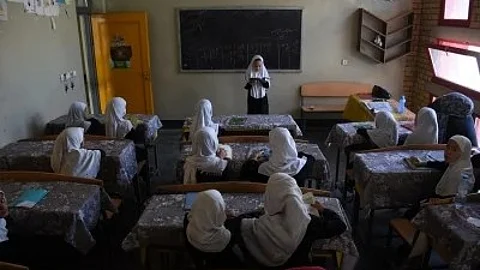

Amidst a flailing public school system in the country, parents in Afghanistan are turning to an unlikely saviour to ensure their children’s education — madrassas.
Afghanistan’s public education system has been seeing diminishing effectiveness due to financial constraints, a shortage of teaching staff, and long-lasting consequences from the war between the Taliban and the United States of America in the country.
As a result, madrassas, which traditionally provide religious education on the Quran, Islamic law and jurisprudence, and Arabic language, are now also providing instruction in “secular” subjects such as English and mathematics, Al Jazeera reports.
Girls in Afghanistan now face extremely severe hurdles to receiving an education. With secondary education for girls prohibited under the current Taliban rule, some of them attend madrassas as one of their few remaining avenues to learning. However, their opportunities remain limited even within these establishments.
Madrassas in Afghanistan are seeing an increase in enrolment rates and expansion of their networks. According to Al Jazeera, one madrasa in Kabul alone grew from 35 students to over 160 students in only five years.
However, many madrassas in Afghanistan do not fulfill national and international educational standards, raising worries about their influence on students' overall development.
Critics believe that madrassas frequently function as centres for religious indoctrination, and their rising importance may have a significant impact on Afghanistan's future.
However, for many children across the country, these religious schools are their only available — and the only remaining — source of education.
